Learn Every Guitar Note In 5 Days: Step-by-Step System
Does learning every note on the guitar seem overwhelming to you? It doesn’t have to be. There are several “hacks” to learning every note on the fretboard. This article provides an incremental, 5 day system to help you learn every note. If you make a solid effort to do this for a few minutes a day you’ll have it down, no problem!
Why Learn Every Guitar Note?
- Musical competency – To become an advanced guitarist, you should possess a solid understanding of your instrument. This includes knowing every note on the fretboard. No more guessing where the notes are. You’ll just know them by heart.
- Fretboard freedom – You’ll know right where to go for any chord, scale, arpeggio, etc. When you’re prompted to play a certain chord or scale, you need to know where to go on the fretboard.
- Better communication/collaboration with other musicians – When you’re playing with a piano or keyboard player, they aren’t going to tell you to go to the 4th fret. They’re going to tell you to play in the key of Ab or G#. If you’re told to play an EbMaj7 chord, you need to know where to go to play that chord.
- No more reliance on tabs – Do you use still use tablature? Shame on you! (kidding). Seriously though, you’ll be able to understand how the instrument is laid out, and not be in the dark anymore when trying to understand someone else’s tablature.
Music Theory Reminders
Here are some things you’ll start to notice as you begin learning the notes on the guitar.
- We’ll start by learning the natural notes only, then the accidentals. Natural notes are just the note letter, not sharp, not flat. Sharp or flat notes are accidentals. See my music theory terms article for more information.
- There is only 1 half-step between the E-F notes and the B-C notes. All other natural notes have a whole-step in between them.
- When ascending in pitch, the accidental notes are named as sharps. When descending in pitch, the accidental notes are named as flats.
Understanding Fretboard Diagrams
See the diagram below to learn the string numbers for a right-handed guitar. I’ve shown right-handed since it is the most common. For left-handed guitars, the nut will be on the right side of the diagram.
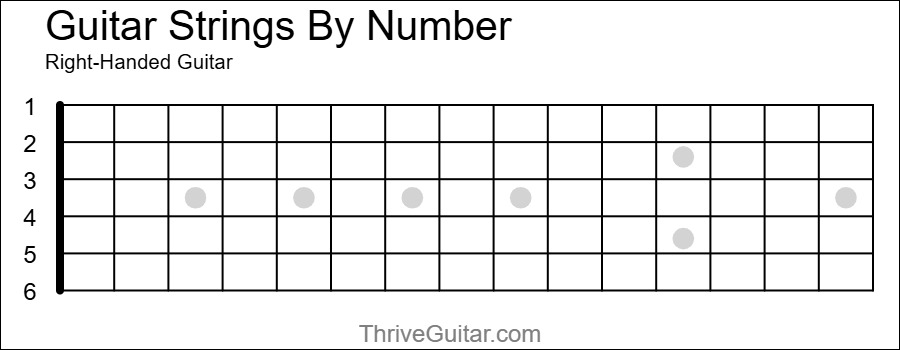
And of course, we need to know the fret numbers. Get to know these based on the fretboard markings of your guitar. Typically you’ll see markings on the 3rd, 5th, 7th, 9th, and 12th frets. The pattern usually repeats as you go above fret 12.
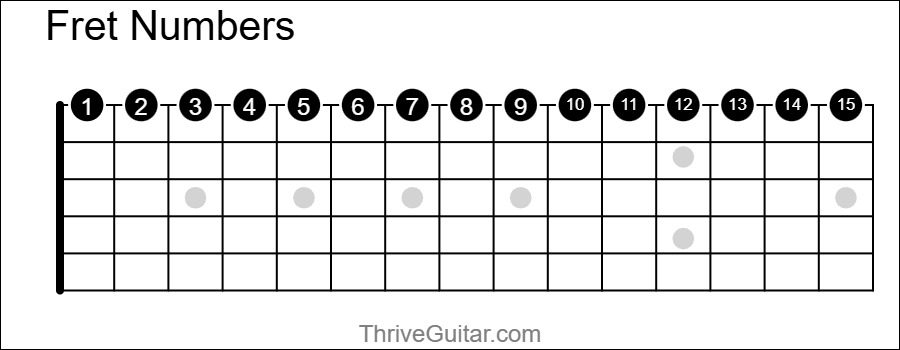
Day 1 – Learn the Open String & 12th Fret Notes
The notes on the open strings are the same as the 12th fret. The notes on the 12th fret and above are the same as frets 1-12, just an octave higher. For example, frets 1 and 13 are an F note on the 1st and 6th strings. This rule applies to every string, every note. Add 12 frets to any note, and you’ll have the same note, an octave higher.
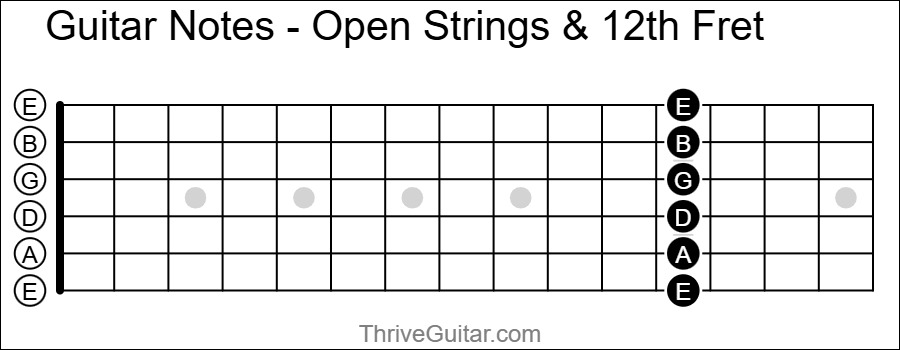
Popular Mnemonics to Help Remember the Open String Notes
A “mnemonic” is a phrase that can be useful as a tool to help remember things that start with a sequence of letters. Use them to your advantage. Here are some popular ones, but feel free to make up your own!
- Starting at string 1 to 6 – “Every Boy Gets Donuts After Exams”
- Starting at string 6 to 1 – “Eddie Ate Dynamite, Good Bye Eddie”
Day 2 – Learn the 5th & 6th (and 1st) String Notes
You need to know the notes on strings 5 and 6. Be sure to commit them to memory as soon as possible. Take a look at how to notes start repeating themselves above the 12th fret.

When you learn the 6th string notes, you get the notes on the 1st string for free. They are the same notes, two octaves higher.
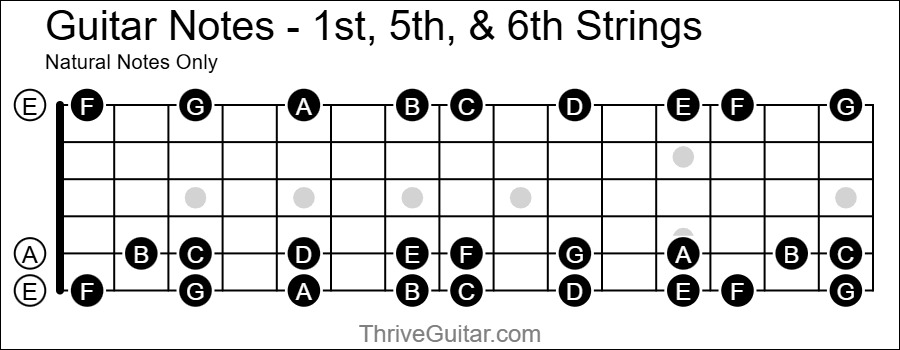
We’ve conquered a lot of territory in just your first two days!
Day 3 – Learn the 3rd & 4th String Notes
Do you remember our lesson on intervals? When we learn the notes on the 5th and 6th strings, we can determine the notes on the 3rd and 4th strings with the help of octave pairs. Take a look at the diagrams below.
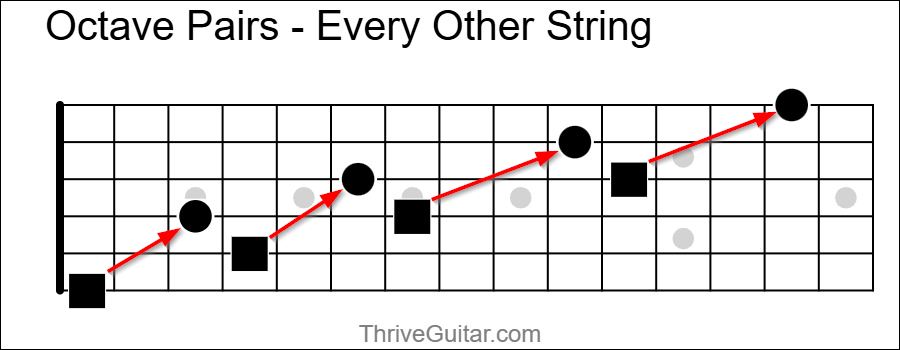
Now, have a look at the notes on strings 3 and 4.
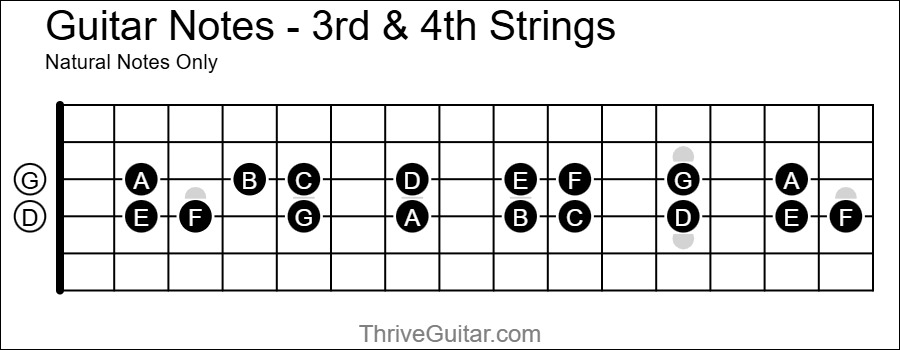
The octave mappings from the diagram above apply to the notes in this diagram. Note names on strings 5 and 6 are the same as the note names on strings 3 & 4, if you go up two frets and two strings. They are just an octave higher in pitch. Let’s bring it all together by looking at the notes on strings 3-6.
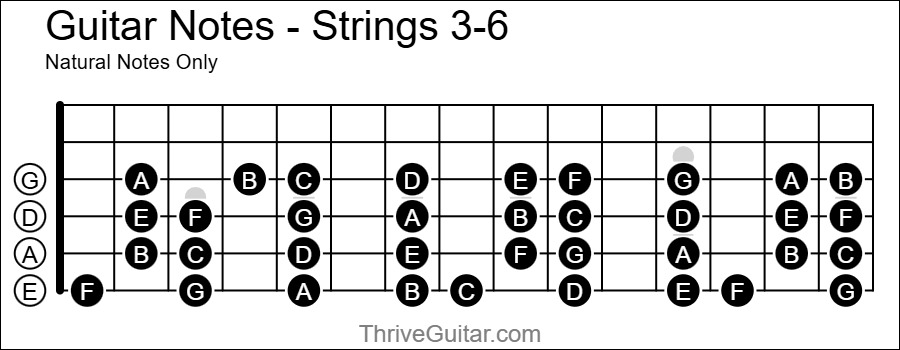
Don’t forget, we already know the notes on the 1st string.

We’re almost there! This only leaves us with the notes on the 2nd string to learn.
Day 4 – Learn the 2nd String Notes
We already learned that the notes on the 1st string are the same as the notes on the 6th string, two octaves higher in pitch. That leaves us with only having to learn the notes on the 2nd string. Here they are.
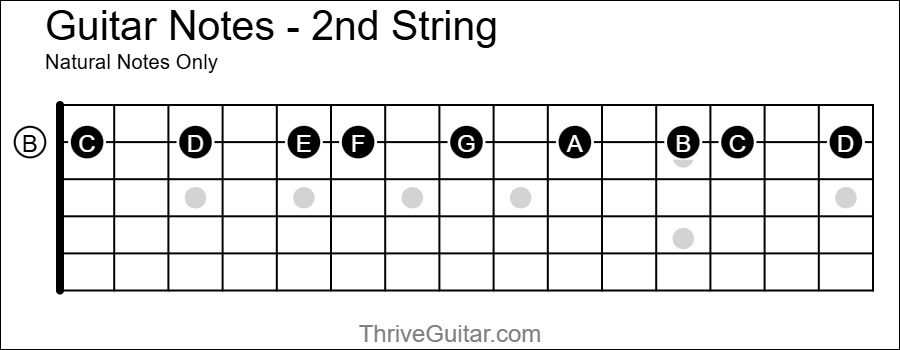
The diagram of the octave pairs on every other string still applies to the 2nd string notes. If we travel up two strings and up three frets from the 4th string, the note names are the same, just an octave higher.

To drive this concept home, let’s apply the octave mappings to the 4th and 2nd strings. Starting at the 4th string, if you travel up two strings and up three frets, you have the same note, an octave higher. Do you see the pattern?
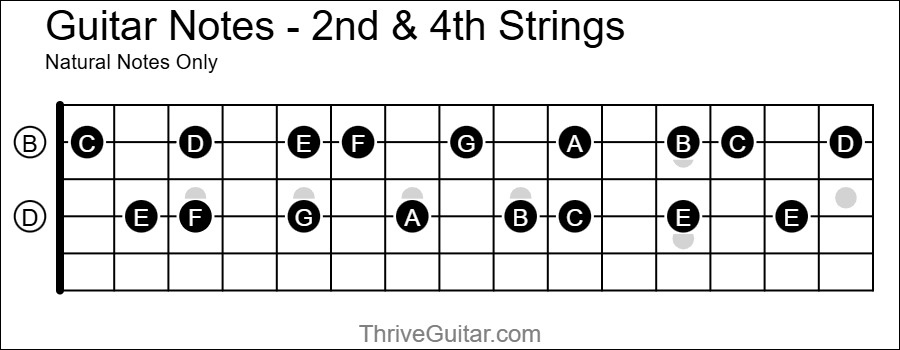
If you haven’t noticed, we now know all of the natural notes on the guitar. Since strings 1 and 6 are the same notes, we can add those onto the diagram now.
All Natural Notes on the Guitar
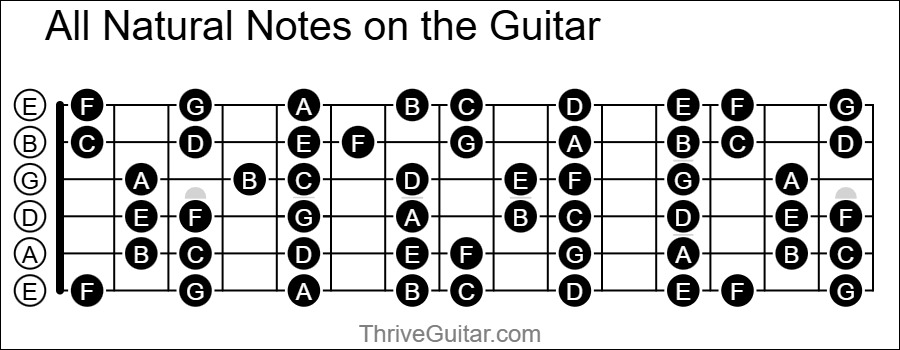
Day 5 – Learn the Accidentals
Now that you know all of the natural notes on the guitar, it’s easy enough to add in the accidentals. Remember, an accidental is just a raised (sharp) or lowered (flat) note of a natural note. Example: a half-step higher than a G is a G-sharp (G#). If we lower the G by a half-step, it becomes a G-flat (Gb).
Here are the diagrams of every note on the guitar, including the accidentals.
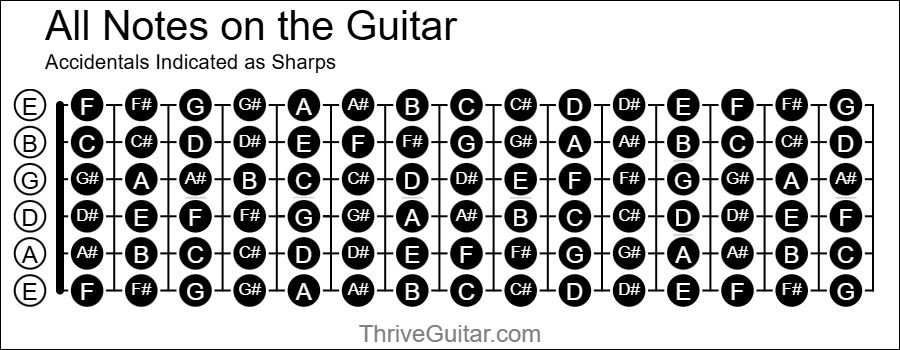
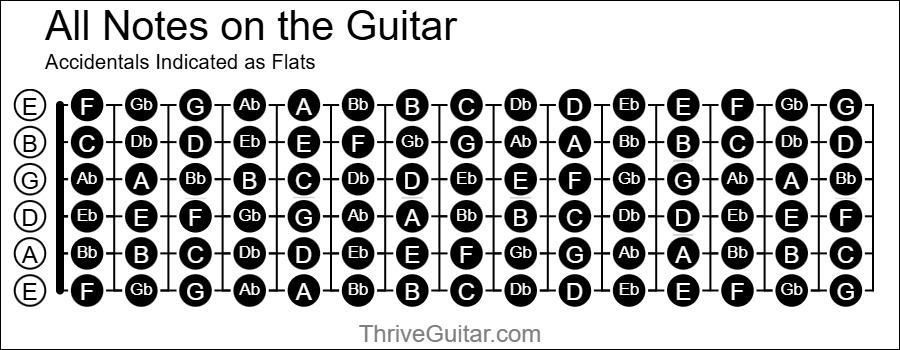
Tips For Learning Every Note
- Quiz yourself every day for a few minutes. It’s better to spend multiple 5-minute sessions quizzing yourself than sitting down for an hour. Break it up into smaller learning segments multiple times per day
- Eventually…learn all of the notes without having to rely on octave mappings. This is fine at first, while you’re learning the notes, but we don’t want to rely on that forever.
- Use mnemonics to help you at first.
Summary
There you have it. You now have a roadmap of how to learn every note on the guitar. Use this 5 day system to help you learn all the notes. Use the tips below to help you.
Hopefully this article will help you with learning every note on the guitar. Every advanced guitarist should know every note on the instrument. It’s not crucial to know them all immediately, but over the course of a few months, you should strive to have a very solid understanding of the notes.
If you have any comments, questions, or suggestions of your own, I’d love to hear about them. Please leave a comment below!
